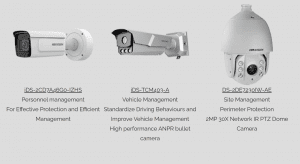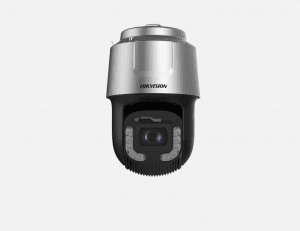CCTV Cameras For Construction Site Monitoring

Closed-circuit television (CCTV) monitoring has been a widely utilized crime prevention tool worldwide in recent years. CCTV has seen a huge increase in popularity as a result of technological advancements in the camera and data transport industries, which have led to cheaper equipment prices and more powerful wired and wireless networks. Despite being used in the majority of crime or fraud prevention situations, CCTV is essential for securing construction sites from theft and illegal entry.
Challenges
It is uncommon to think of a building site as an infrastructure that draws a lot of unwelcome criminal attention. Construction site theft, according to The National Equipment Register (NER), is a low-risk, high-opportunity activity for thieves, but it can have a significant impact on operational costs. It is estimated that the annual value of stolen construction items in the US alone ranges from $300 million to $1 billion. CCTV is often used to prevent theft and criminal behavior, aid in the recovery of misplaced items, and—most importantly—ensure that all operating-hours construction laws and regulations are observed. CCTV video is often kept on-site, however this is not the most secure choice since it might be corrupted or stolen. Due to the fact that engineering networks, including wired Internet connection, are often only introduced at a late stage of most building projects, the key problem is being able to view CCTV video independently from on-site storage.
Retail businesses sometimes depend on wired Internet connectivity that is controlled by a neighborhood ISP over which they have little influence. Unfortunately, no service provider can yet provide 100% uninterrupted, consistent Internet access. For a retail organization, even a little delay in connection may result in significant costs in terms of missed sales, customers, and stock management.
Proposed Solution for Kuraray Client
The Kuraray Group is dedicated to creating new commercial sectors through the use of cutting-edge technology that improves the environment and raises living standards all over the world.
For the Kuraray factory’s perimeter, we created and finished the entire design plan. At the 2.5-kilometer boundary, the greatest level of safety was protected with the least amount of money. The camera was given an impenetrable working space thanks to photoelectric separation technology.
CCTV Cameras

For this client, we set up more than 100 closed-circuit television cameras that are all a part of their security systems. The client hired us to install the two closed-circuit television systems you see below.
Camera with Pan, Tilt, and Zoom

Closed-circuit television systems that use PTZ (pan, tilt, and zoom) enable the camera to be rotated left to right, up and down, and even closer and farther away. These cameras are used in conjunction with a live guard or surveillance specialist to operate the security apparatus.
Additional benefits of PTZ CCTV cameras include:
High quality internal and external dome cameras with IR night vision that has a 200-meter range and an X36 optical zoom
The dome close circuit television is one of the most popular security and surveillance cameras for both indoor and outdoor use. It’s a clever design choice that makes it difficult for observers to determine which way the camera is facing, which discourages offenders by instilling a sense of uncertainty. The following are additional benefits of this kind of camera:
Internal and external dome CCTV cameras benefits:
- Setting up a CCTV system is simple.
- Vandalism-resistant features
- Night vision with infrared
- If you’re looking for these, these close circuit television systems are very effective and practical.
Access Control
As the first step, installing access control is necessary to ensure that unauthorized individuals cannot enter your facility. Who, where, and when are important factors in door access control. Who is permitted entry and exit, where they are permitted entry and exit, and when they are permitted entry and exit are all determined by an access control system. The physical security of your remote sites and the security of your system equipment can therefore be ensured with this type of access control, which is the best available. The use of mechanical locks and keys is insufficient.
Computers are used to overcome the drawbacks of mechanical locks and keys in central door and access systems. Mechanical keys can be changed using a number of different techniques. To open your doors, you have a variety of options, including key fobs, swipe cards, keypad passwords, biometric scanning, and key fobs.
Instead of using the information from a card you carry, these specialized biometric readers are made to read biometric data. There are readers that read a characteristic of the person rather than the card they are carrying, such as fingerprint readers, facial readers, finger vein readers, and others. This system is significantly safer. It’s also very simple to install access control.
